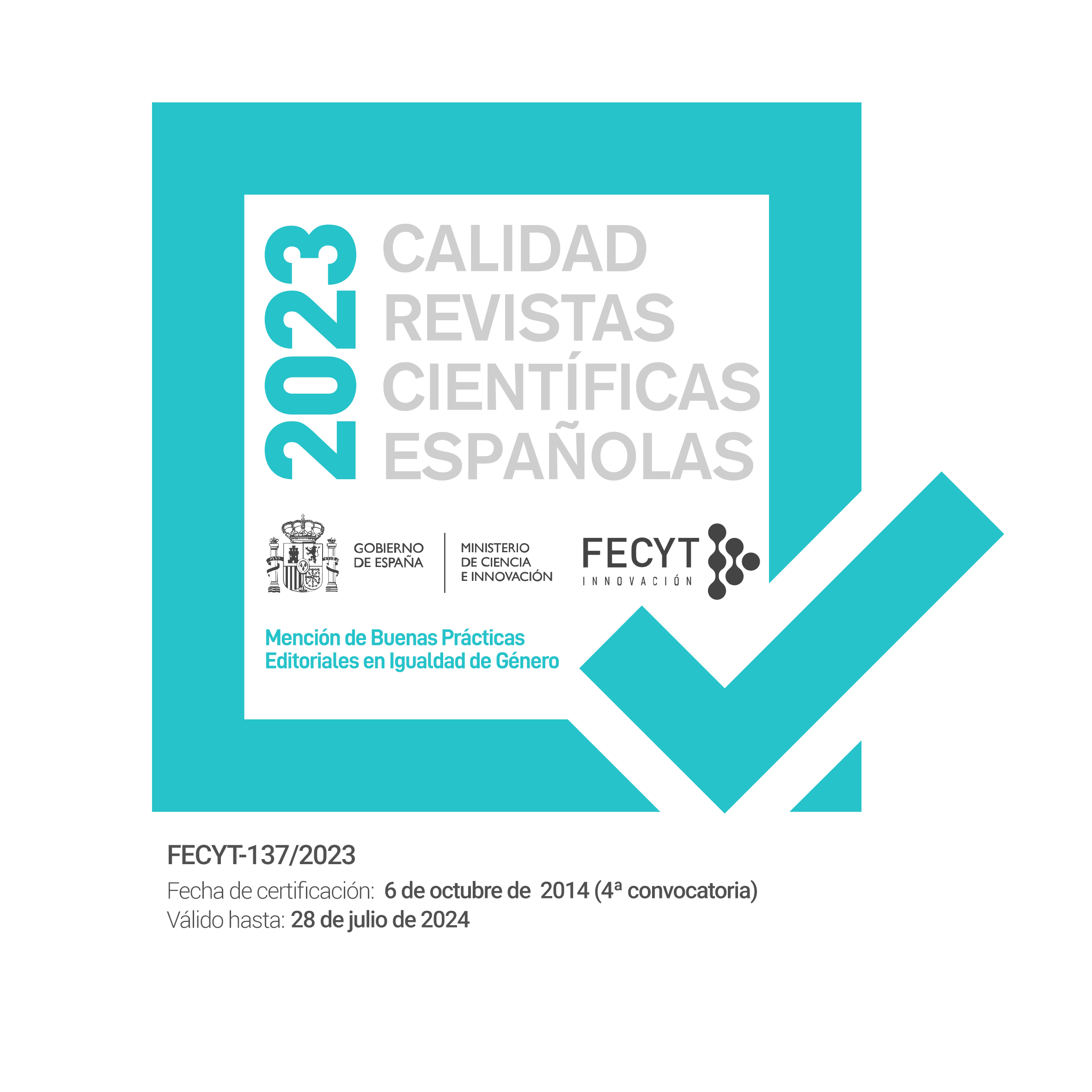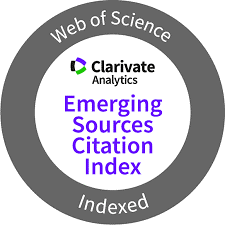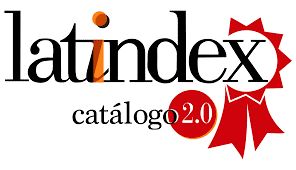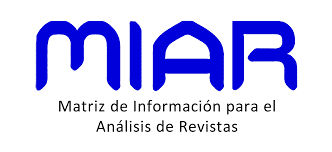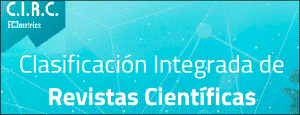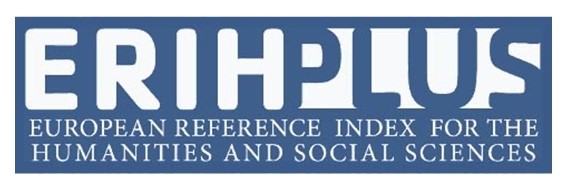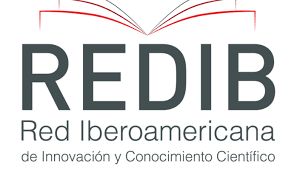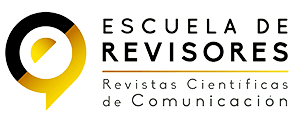Factores del entorno de los alumnos de Educación Primaria que influyen en su exposición a la pornografía en la Era Digital
DOI:
https://doi.org/10.31921/doxacom.n38a1948Palabras clave:
Factores del entorno, estudiantes de Primaria, exposición a la pornografía, era digitalResumen
En la actualidad, la exposición de los alumnos de Primaria a la pornografía es cada vez mayor. Esta exposición afecta al desarrollo personal de decenas de millones de estudiantes de Educación Primaria en Indonesia. Los factores del entorno de los alumnos en su exposición a la pornografía son el objeto de este estudio. Se analizan, así, los tipos de factores del entorno, el papel del medio ambiente, y el proceso de exposición a la pornografía facilitado por este entorno. Se ha utilizado la observación, entrevistas en profundidad y notas de campo para recopilar datos en este estudio de carácter cualitativo. Se constata que existen tres tipos de entornos relacionados con los alumnos de Primaria. Todos ellos desempeñan un papel importante en la exposición a la pornografía. La interacción con dos o tres de estos entornos al mismo tiempo, a través de un entorno virtual, facilita la exposición a la pornografía. Esta interacción necesita ser estudiada porque la relación con el entorno virtual no se da sin la interacción con el entorno físico y/o social. Las instituciones escolares deberían reducir la exposición de los alumnos a la pornografía y, al tiempo, maximizar su papel para cambiar el comportamiento de los alumnos.
Descargas
Citas
Agim, N. C., & Nwaohiri, N. M. (2021). Understanding the Information User in the Electronic Age. In J. P. Chigwada & N. Nwaohiri (Eds.), Examining the impact of industry 4.0 on academic libraries (pp. 47–53). Emerald Publishing Limited. https://doi.org/10.1108/978-1-80043-656-520201013
Alsubaie, M. A. (2022). Distance education and the social literacy of elementary school students during the Covid-19 pandemic. Heliyon, 8(7), e09811. https://doi.org/10.1016/j.heliyon.2022.e09811
Alzubi, A. A. F., & Kaur, M. (2018). The impact of social strategies through smartphones on the Saudi learners’ socio-cultural autonomy in EFL reading context. International Electronic Journal of Elementary Education, 11(1), 31–40. https://doi.org/10.26822/IEJEE.2018143958
Arvanitaki, M., & Zaranis, N. (2020). The use of ICT in teaching geometry in primary school. Education and Information Technologies. https://doi.org/10.1007/s10639-020-10210-7
Baafi, R. K. A. (2020). School Physical Environment and Student Academic Performance. Advances in Physical Education, 10(02), 121–137. https://doi.org/10.4236/ape.2020.102012
Baharuddin, Esa, & Nurwahyuni. (2007). Teori Belajar dan Pembelajaran. Ar-Ruzz Media Grup.
Bandura, A. (1977a). Self-efficacy: Toward a unifying theory of behavioral change. Psychological Review, 84(2), 191–215. https://doi.org/10.1037/0033-295X.84.2.191
Bandura, A. (1977b). Social Learning Theory. In Prentice-Hall, Inc. Prentice-Hall, Inc.
Bond, M. (2020). Schools and emergency remote education during the COVID-19 pandemic: A living rapid systematic review. Asian Journal of Distance Education, 15(2), 191–247. https://doi.org/10.5281/zenodo.4425683
Bőthe, B., Tóth-Király, I., Griffiths, M. D., Potenza, M. N., Orosz, G., & Demetrovics, Z. (2021). Are sexual functioning problems associated with frequent pornography use and/or problematic pornography use? Results from a large community survey including males and females. Addictive Behaviors, 112(August 2020). https://doi.org/10.1016/j.addbeh.2020.106603
Bőthe, B., Vaillancourt-Morel, M. P., Girouard, A., Štulhofer, A., Dion, J., & Bergeron, S. (2020). A Large-Scale Comparison of Canadian Sexual/Gender Minority and Heterosexual, Cisgender Adolescents’ Pornography Use Characteristics. Journal of Sexual Medicine, 17(6), 1156–1167. https://doi.org/10.1016/j.jsxm.2020.02.009
Cai, P. (2021). Thinking skills development in mobile learning: The case of elementary school students studying environmental studies. Thinking Skills and Creativity, 42, 100922. https://doi.org/10.1016/j.tsc.2021.100922
Cervigón-Carrasco, V., Schulze-Steinen, L., Ballester-Arnal, R., Billieux, J., Juliá, B. G., Giménez-García, C., & Castro-Calvo, J. (2023). Attentional inhibitory control interference related to videogames, pornography, and TV series exposure: An experimental study in three independent samples. Computers in Human Behavior, 143(September 2022), 107683. https://doi.org/10.1016/j.chb.2023.107683
Dalkin, S., Forster, N., Hodgson, P., Lhussier, M., & Carr, S. M. (2021). Using computer assisted qualitative data analysis software (CAQDAS; NVivo) to assist in the complex process of realist theory generation, refinement and testing. International Journal of Social Research Methodology, 24(1), 123–134. https://doi.org/10.1080/13645579.2020.1803528
Delahunty, A. B. & D. (2021). Primary School Education in the Time of COVID-19 – A Literature Review. Jultika Oulun, 1–50.
Dennen, V. P., Choi, H., & Word, K. (2020). Social media, teenagers, and the school context: a scoping review of research in education and related fields. Educational Technology Research and Development, 68(4), 1635–1658. https://doi.org/10.1007/s11423-020-09796-z
Diningrat, S. W. M., Setyosari, P., Ulfa, S., & Widiati, U. (2023). The Effect of an Extended Flipped Classroom Model for Fully Online Learning and its interaction with Working Memory Capacity on Students’ Reading Comprehension. Journal of New Approaches in Educational Research, 12(1), 77–99. https://doi.org/10.7821/naer.2023.1.1073
Efiloğlu Kurt, Ö., & Tingöy, Ö. (2017). The acceptance and use of a virtual learning environment in higher education: an empirical study in Turkey, and the UK. International Journal of Educational Technology in Higher Education, 14(1). https://doi.org/10.1186/s41239-017-0064-z
Efrati, Y., & Amichai-Hamburger, Y. (2020). Are adolescents who consume pornography different from those who engaged in online sexual activities? Children and Youth Services Review, 111(October 2019), 104843. https://doi.org/10.1016/j.childyouth.2020.104843
Eutsler, L., Mitchell, C., Stamm, B., & Kogut, A. (2020). The influence of mobile technologies on preschool and elementary children’s literacy achievement: a systematic review spanning 2007–2019. Educational Technology Research and Development, 68(4), 1739–1768. https://doi.org/10.1007/s11423-020-09786-1
Fallon, B., Joh-Carnella, N., Trocmé, N., Chabot, M., Esposito, T., Nosrati-Inanlou, M., & Collin-Vézina, D. (2019). An examination of trends in child sexual abuse investigations in Ontario over time. Child Abuse and Neglect, 88(September 2018), 389–399. https://doi.org/10.1016/j.chiabu.2018.12.012
Fineberg, N. A., Demetrovics, Z., Stein, D. J., Ioannidis, K., Potenza, M. N., Grünblatt, E., Brand, M., Billieux, J., Carmi, L., King, D. L., Grant, J. E., Yücel, M., Dell’Osso, B., Rumpf, H. J., Hall, N., Hollander, E., Goudriaan, A., Menchon, J., Zohar, J., … Chamberlain, S. R. (2018). Manifesto for a European research network into Problematic Usage of the Internet. European Neuropsychopharmacology, 28(11), 1232–1246. https://doi.org/10.1016/j.euroneuro.2018.08.004
Guggisberg, M. (2020). Sexually explicit video games and online pornography – The promotion of sexual violence: A critical commentary. Aggression and Violent Behavior, 53(May), 101432. https://doi.org/10.1016/j.avb.2020.101432
Habesha, T., Aderaw, Z., & Lakew, S. (2015). Assessment of exposure to sexually explicit materials and factors associated with exposure among preparatory school youths in Hawassa City, Southern Ethiopia: A cross-sectional institution based survey. Reproductive Health, 12(1), 1–12. https://doi.org/10.1186/s12978-015-0068-x
Hashim, S., Masek, A., Abdullah, N. S., Paimin, A. N., & Muda, W. H. N. W. (2020). Students’ intention to share information via social media: A case study of COVID-19 pandemic. Indonesian Journal of Science and Technology, 5(2), 236–245. https://doi.org/10.17509/ijost.v5i2.24586
Hemphill, M.., & Richards, K. A. (2018). A practical guide to collaborative qualitative data analysis. Journal of Teaching in Physical Education, 37(2), 225–231.
Henry, C., & Talbot, H. (2019). The complexities of young New Zealanders’ use and perceptions of pornography: a quantitative survey in context. Porn Studies, 6(4), 391–410. https://doi.org/10.1080/23268743.2019.1656544
Herbenick, D., Fu, T. C., Wright, P., Paul, B., Gradus, R., Bauer, J., & Jones, R. (2020). Diverse Sexual Behaviors and Pornography Use: Findings From a Nationally Representative Probability Survey of Americans Aged 18 to 60 Years. Journal of Sexual Medicine, 17(4), 623–633. https://doi.org/10.1016/j.jsxm.2020.01.013
Hornor, G. (2020). Child and Adolescent Pornography Exposure. Journal of Pediatric Health Care, 34(2), 191–199. https://doi.org/10.1016/j.pedhc.2019.10.001
Karakaş, A., & Kartal, G. (2020). Pre-Service Language Teachers’ Autonomous Language Learning with Web 2.0 Tools and Mobile Applications. International Journal of Curriculum and Instruction, 12(1), 51–79.
Kim, J. (2020). Voices of youth in reconceptualising and repositioning the role of mobile learning for sustainable development. Information Technology for Development, 0(0), 1–17. https://doi.org/10.1080/02681102.2020.1749537
Kolnhofer-Derecskei, A., Reicher, R. Z., & Szeghegyi, A. (2017). The X and Y generations’ characteristics comparison. Acta Polytechnica Hungarica. https://doi.org/10.12700/APH.14.8.2017.8.6
Kozak, S., & Recchia, H. (2019). Reading and the Development of Social Understanding: Implications for the Literacy Classroom. Reading Teacher, 72(5), 569–577. https://doi.org/10.1002/trtr.1760
Laconi, S., Andréoletti, A., Chauchard, E., Rodgers, R. F., & Chabrol, H. (2016). Utilisation problématique d’Internet, temps passé en ligne et traits de personnalité. Encephale, 42(3), 214–218. https://doi.org/10.1016/j.encep.2015.12.017
Landripet, I., Buško, V., & Štulhofer, A. (2019). Testing the content progression thesis: A longitudinal assessment of pornography use and preference for coercive and violent content among male adolescents. Social Science Research, 81(January), 32–41. https://doi.org/10.1016/j.ssresearch.2019.03.003
Lestari, I. A., Fibriana, A. I., & Prameswari, N. (2014). Faktor-Faktor yang berhubungan dengan Perilaku Seks Pranikah pada Mahasiswa UNNES. Unnes Journal of Public Health.
Li, X., & Qin, Y. (2018). Research on criminal jurisdiction of computer cybercrime. Procedia Computer Science, 131, 793–799. https://doi.org/10.1016/j.procs.2018.04.263
López-Faican, L., & Jaen, J. (2020). EmoFindAR: Evaluation of a mobile multiplayer augmented reality game for primary school children. Computers and Education, 149(January). https://doi.org/10.1016/j.compedu.2020.103814
Maisyaroh, Juharyanto, Bafadal, I., Wiyono, B. B., Adha, M. A., & Surif, J. (2022). Diverrs of Primary School Students’ Achievement in Indonesia During Pandemic. European Journal of Educational Research, 12(3), 1393–1405. https://doi.org/10.12973/eu-jer.12.3.1393
Mardianto, Hanurawan, F., Chusniyah, T., Rahmawati, H., Ifdil, I., & Pratama, M. (2019). Cyber aggression of students: The role and intensity of the use of social media and cyber wellness. International Journal of Innovation, Creativity and Change, 5(6), 567–582.
Martínez-Domínguez, M., & Fierros-González, I. (2022). Determinants of internet use by school-age children: The challenges for Mexico during the COVID-19 pandemic. Telecommunications Policy, 46(1). https://doi.org/10.1016/j.telpol.2021.102241
Miles, M. B., Huberman, A. M., & Saldana, J. (2014). Qualitative Data Analysis: A Methods Sourcebook. Sage Publications.
Morrison, D., Lichtenwald, K., & Tang, R. (2020). Extending the online focus group method using web-based conferencing to explore older adults online learning. International Journal of Research and Method in Education, 43(1), 78–92. https://doi.org/10.1080/1743727X.2019.1594183
Mudiono, A., Wiyono, B. B., Maisyaroh, Supriyanto, A., & Wong, K. T. (2023). The Effects of the Communicative Approach and the Use of Information Technology on Students’ Motivation and Achievement in Indonesian Language Learning. Journal of Language Teaching and Research, 14(3), 808–819. https://doi.org/10.17507/jltr.1403.29
Murni, R., Setiawan, H. H., Sumarno, S., Kurniasari, A., Astuti, M., Haryati Roebyantho, H., Suhendi, A., & Rahman, A. (2018). Dampak Media Berkonten Pornogra Terhadap Anak. Pusat Penelitian dan Pengembangan Kesejahteraan Sosial, Kementerian Sosial Republik Indonesia.
Okutan, A., & Çebi, Y. (2019). A Framework for Cyber Crime Investigation. Procedia Computer Science, 158, 287–294. https://doi.org/10.1016/j.procs.2019.09.054
Papastergiou, M., Natsis, P., Vernadakis, N., & Antoniou, P. (2020). Introducing tablets and a mobile fitness application into primary school physical education. Education and Information Technologies. https://doi.org/10.1007/s10639-020-10289-y
Peter, J., & Valkenburg, P. M. (2016). Adolescents and Pornography: A Review of 20 Years of Research. In Journal of Sex Research. https://doi.org/10.1080/00224499.2016.1143441
Pinto, M., & Leite, C. (2020). Digital technologies in support of students learning in higher education: Literature review. Digital Education Review, 37, 343–360. https://doi.org/10.1344/DER.2020.37.343-360
Pons-Salvador, G., Zubieta-Méndez, X., & Frias-Navarro, D. (2018). Internet Use by Children Aged six to nine: Parents’ Beliefs and Knowledge about Risk Prevention. Child Indicators Research, 11(6), 1983–2000. https://doi.org/10.1007/s12187-018-9529-4
Potoglou, D., Dunkerley, F., Patil, S., & Robinson, N. (2017). Public preferences for internet surveillance, data retention and privacy enhancing services: Evidence from a pan-European study. Computers in Human Behavior, 75, 811–825. https://doi.org/10.1016/j.chb.2017.06.007
Price, J., Patterson, R., Regnerus, M., & Walley, J. (2016). How much more XXX is generation X consuming? Evidence of changing attitudes and behaviors related to pornography since 1973. Journal of Sex Research. https://doi.org/10.1080/00224499.2014.1003773
Rahayu, S., Setyosari, P., Hidayat, A., & Kuswandi, D. (2022). the Effectiveness of Creative Problem Solving-Flipped Classroom for Enhancing Students’ Creative Thinking Skills in Online Physics Educational Learning. Jurnal Pendidikan IPA Indonesia, 11(4), 649–656. https://doi.org/10.15294/jpii.v11i4.39709
Roche, S., Otarra, C., Fell, I., Belle Torres, C., & Rees, S. (2023). Online sexual exploitation of children in the Philippines: A scoping review. Children and Youth Services Review, 148(September 2022), 106861. https://doi.org/10.1016/j.childyouth.2023.106861
Rokhmah, D., & Khoiron. (2015). The Role of Sexual Behavior in the Transmission of HIV and AIDS in Adolescent in Coastal Area. Procedia Environmental Sciences, 23(Ictcred 2014), 99–104. https://doi.org/10.1016/j.proenv.2015.01.015
Ross, S. M. (2020). Technology infusion in K-12 classrooms: a retrospective look at three decades of challenges and advancements in research and practice. Educational Technology Research and Development, 0123456789. https://doi.org/10.1007/s11423-020-09756-7
Salmerón, L., Sampietro, A., & Delgado, P. (2020). Using Internet videos to learn about controversies: Evaluation and integration of multiple and multimodal documents by primary school students. Computers and Education, 148(January 2019). https://doi.org/10.1016/j.compedu.2019.103796
Sanjuan, C. (2020). (Des)información sexual: pornografía y adolescencia. https://bit.ly/46C4l1A
Shi, L., Han, L., Yang, F., & Gao, L. (2019). The Evolution of Sustainable Development Theory: Types, Goals, and Research Prospects. Sustainability (Switzerland), 11(24), 1–16. https://doi.org/10.3390/su11247158
Short, M. B., Black, L., Smith, A. H., Wetterneck, C. T., & Wells, D. E. (2012). A review of internet pornography use research: Methodology and content from the past 10 years. In Cyberpsychology, Behavior, and Social Networking. https://doi.org/10.1089/cyber.2010.0477
Stanley, N., Barter, C., Wood, M., Aghtaie, N., Larkins, C., Lanau, A., & Överlien, C. (2016). Pornography, Sexual Coercion and Abuse and Sexting in Young People’s Intimate Relationships: A European Study. Journal of Interpersonal Violence, 33(19), 1–26. https://doi.org/10.1177/0886260516633204
Sulistiani, I. R., Setyosari, P., Sa’dijah, C., & Praherdhiono, H. (2023). Technology integration through acceptance of e-learning among preservice teachers. Indonesian Journal of Electrical Engineering and Computer Science, 31(3), 1821–1828. https://doi.org/10.11591/ijeecs.v31.i3.pp1821-1828
Tejedor Calvo, S., Cervi, L., Robledo-Dioses, K., & Pulido Rodríguez, C. (2022). Desafíos del uso de TikTok como plataforma educativa: Una red multitemática donde el humor supera al debate. Aula Abierta, 51(2), 121–128. https://doi.org/10.17811/rifie.51.2.2022.121-128
Todaro, E., Silvaggi, M., Aversa, F., Rossi, V., Nimbi, F. M., Rossi, R., & Simonelli, C. (2018). Are Social Media a problem or a tool? New strategies for sexual education. Sexologies, 27(3), e67–e70. https://doi.org/10.1016/j.sexol.2018.05.006
Tzankova, V. (2018). Online Pornography. The Blackwell Encyclopedia of Sociology, 1–8. https://doi.org/10.1002/9781405165518.wbeos1142
Villagómez León, D. (2021). El uso de la pornografía en los jóvenes del siglo XXI: una revisión narrativa. In Universidad Autónoma de Madrid. Universidad Autónoma de Madrid.
Wolak, J., Mitchell, K., & Finkelhor, D. (2007). Unwanted and wanted exposure to online pornography in a national sample of youth internet users. Pediatrics, 119(2), 247–257. https://doi.org/10.1542/peds.2006-1891
Wright, P. J., & Donnerstein, E. (2014). Sex Online: Pornography, sexual solicitation, and sexting. Adolescent Medicine: State of the Art Reviews.
Wright, P. J., Sun, C., & Miezan, E. (2019). Individual differences in women’s pornography use, perceptions of pornography, and unprotected sex: Preliminary results from South Korea. Personality and Individual Differences, 141(October 2018), 107–110. https://doi.org/10.1016/j.paid.2018.12.030
Wright, T. S., & Domke, L. M. (2019). The Role of Language and Literacy in K-5 Science and Social Studies Standards. Journal of Literacy Research, 51(1), 5–29. https://doi.org/10.1177/1086296X18821141
Yamaç, A., Öztürk, E., & Mutlu, N. (2020). Effect of digital writing instruction with tablets on primary school students’ writing performance and writing knowledge. Computers and Education, 157, 103981. https://doi.org/10.1016/j.compedu.2020.103981
Zohor Ali, A. A., Muhammad, N. A., Jamil, T. R., Ahmad, S., & Abd Aziz, N. A. (2021). Internet pornography exposures amongst young people in Malaysia: A cross-sectional study looking into the role of gender and perceived realism versus the actual sexual activities. Addictive Behaviors Reports, 14, 100350. https://doi.org/10.1016/j.abrep.2021.100350
Descargas
Publicado
Cómo citar
Número
Sección
Licencia
Derechos de autor 2023 Achmad Ryan Fauzi, Ibrahim Bafadal, Ali Imron, Syamsul Hadi

Esta obra está bajo una licencia internacional Creative Commons Atribución-NoComercial 4.0.




